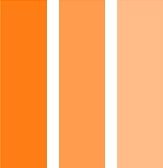What if the cure for thinning hair was hiding in plain sight inside a blood pressure medication? That’s exactly how Minoxidil, once a treatment for high blood pressure, rewrote its own story and became one of the most trusted solutions for hair regrowth across the globe.
A Surprising Detour
Minoxidil wasn’t born in a beauty aisle. It was originally developed in the late 1970s as a vasodilator a drug that relaxes blood vessels and improves circulation to help patients with hypertension. By widening the blood vessels, Minoxidil lowered blood pressure and improved blood flow throughout the body.
But somewhere along the way, researchers noticed something unusual. Patients using the drug to treat high blood pressure started reporting an unexpected side effect excess hair growth. The very mechanism that improved blood flow to vital organs was also stimulating dormant hair follicles, keeping them in their growth phase and reducing hair shedding.
This curious observation marked the beginning of Minoxidil’s second life. Hair loss sufferers, many of whom were desperate for effective treatments, suddenly found themselves with a new ally in the fight against thinning hair.
How Minoxidil Works: The Science Behind the Follicle Fix
The hair growth cycle is a finely tuned process involving phases of growth (anagen), rest (telogen), and shedding (catagen). For many experiencing hair loss especially androgenetic alopecia, commonly known as male or female pattern baldness the growth phase shortens while the resting phase lengthens, leading to thinner hair and eventual hair loss.
Minoxidil addresses this by targeting the scalp’s blood supply, unlocking hair follicles that have slowed or shut down. Here’s how it works in detail:
- Vasodilation Boosts Follicle Circulation
Minoxidil acts directly on potassium channels in the smooth muscle cells of blood vessels. By relaxing these cells, it dilates the vessels and increases blood flow to the scalp. This ensures that hair follicles receive the oxygen, nutrients, and hormonal signals needed to thrive.
- Prolonging the Anagen Phase
Hair follicles go through cycles, but Minoxidil helps keep them in the growth (anagen) phase longer. Studies suggest it stimulates follicular cells and increases the expression of growth factors, thereby extending active hair production periods.
- Reviving Dormant Follicles
Some hair follicles that have become inactive due to stress, aging, or hormonal factors are coaxed back into activity. The enhanced circulation combined with follicle stimulation promotes new hair formation in areas previously affected by hair thinning.
- Reduction in Follicle Miniaturization
In androgenetic alopecia, follicles shrink over time. Minoxidil helps counteract this by keeping follicles larger and stronger, reducing the progression of hair loss.
Why It Works Better for Hair Than for Blood Pressure
At first glance, Minoxidil’s ability to lower blood pressure and promote hair growth might seem like two sides of the same coin. However, it’s the specific targeting of hair follicles that sets it apart from other treatments.
Most blood pressure medications work by lowering systemic blood pressure, affecting the entire circulatory system. Minoxidil’s effect on potassium channels and vasodilation, while useful in managing hypertension, also gives it a localized benefit when applied topically to the scalp.
Unlike oral medications that disperse throughout the body, topical Minoxidil concentrates its action where it’s needed most right at the hair follicles. The result? Fewer side effects and a more direct, effective intervention for hair regrowth.
In contrast, other hair loss treatments, such as finasteride, target hormonal pathways by blocking dihydrotestosterone (DHT), a hormone implicated in hair loss. While effective for some, these methods don’t address the blood supply issues at the root of follicle health. Minoxidil, by boosting circulation, complements these approaches or serves as a standalone solution for those unable to tolerate hormone-based treatments.
FDA Approval: A Turning Point in 1988
After years of research and testing, Minoxidil, marketed as Rogaine, received FDA approval in 1988 for the treatment of androgenetic alopecia. It was the first topical treatment specifically endorsed to help hair regrowth. The approval was a landmark moment not just for those struggling with hair loss, but for the medical community’s understanding of hair physiology.
Since then, Minoxidil has remained a gold standard, with countless formulations foam, solution, and combined treatments helping millions regain their confidence and their hair.
The Future of Hair Restoration
Research into Minoxidil’s mechanism continues, with scientists exploring ways to enhance its absorption, reduce side effects, and combine it with other therapies for synergistic results. Innovations like microneedling and low-level laser therapy are being studied in combination with Minoxidil to further boost follicle stimulation and circulation.
The journey that started with blood pressure now bridges dermatology, endocrinology, and cosmetic science. Minoxidil’s legacy is a testament to the power of observation, repurposing, and relentless scientific inquiry.
Conclusion
From its unexpected side effect to FDA approval and global use, Minoxidil’s story is one of discovery, innovation, and transformation. What began as a drug to relax blood vessels is now a cornerstone in the battle against hair loss giving new life to millions. The next time you think about hair regrowth, remember: it’s not magic it’s science, powered by heat, water, and a molecule that knows exactly where to go.





